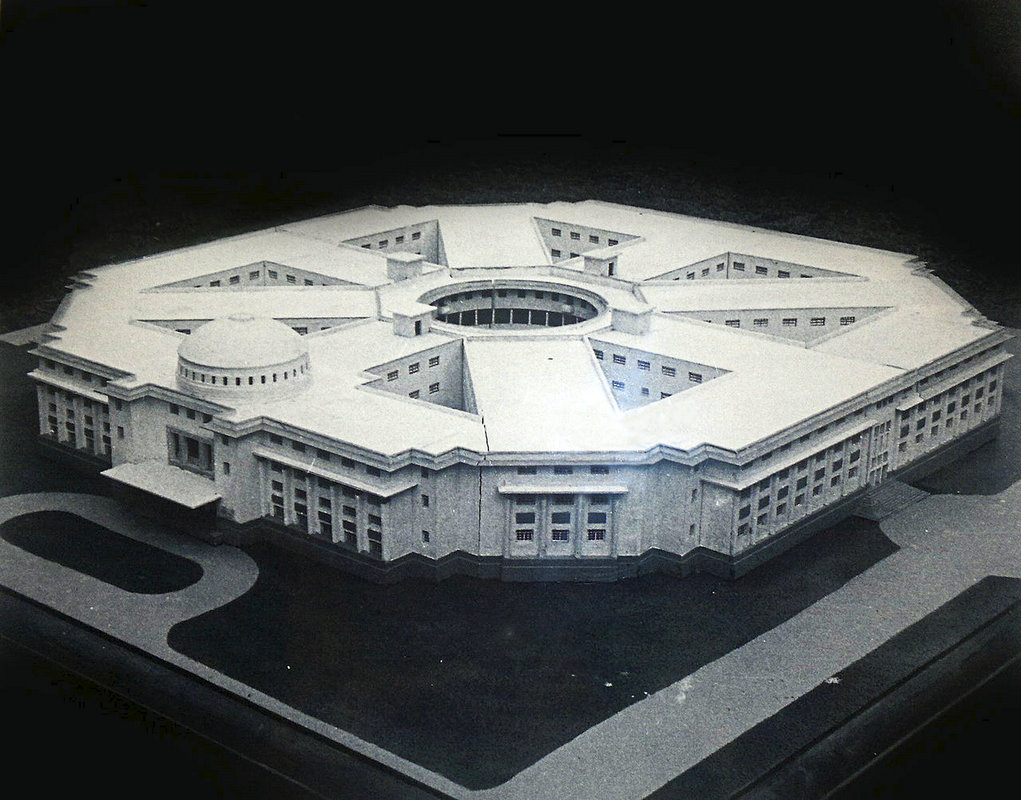The National Museum in New Delhi, also known as the National Museum of India, is one of the largest museums in India. Established in 1949, it holds variety of articles ranging from pre-historic era to modern works of art. It functions under the Ministry of Culture, Government of India. The museum is situated on the corner of Janpath and Maulana Azad Road. The blue–print of the National Museum had been prepared by the Gwyer Committee set up by the Government of India in 1946. The Museum has around 200,000 works of art, both of Indian and foreign origin, covering over 5,000 years.
The National Museum, New Delhi as we see it today in the majestic building on the corner of Janpath and Maulana Azad Road is the prime museum in the country. The blue-print for establishing the National Museum in Delhi had been prepared by the Gwyer Committee set up by the Government of India in 1946. When an Exhibition of Indian Art consisting of selected artefacts from various museums of India, sponsored by the Royal Academy (London) with the co-operation of the Government of India and Britain, was on display in the galleries of Burlington House.
The Museum has in its possession approximately 2,00,000 works of exquisite art of diverse nature, both Indian and foreign and its holdings cover a time span of more than five thousand years of our cultural heritage. While the splendid chronological display of selected art objects in the various galleries, screening of educational films related to art and culture, guided tours, gallery talks by the experts, special lectures and training programmes, facilities for photography and access to the reserve collection and library for the study, and advice on identification of art objects have brought immense laurels to the Museum.
The conservation laboratory had made its existence felt even in other countries. National Museum, New Delhi, today , has in its possession over 2,00,000 works of exquisite art, both of Indian and Foreign origin covering more than 5,000 years of our cultural heritage. Its rich holdings of various creative traditions and disciplines which represents a unity amidst diversity, an unmatched blend of the past with the present and strong perspective for the future, brings history to life. Apart from the collections of Pre-historic Archaeology, Archaeology, Jewellery,Paintings, Decorative arts, Manuscripts, Central Asian Antiquities, Arms and Armour, etc. ,the Museum today has a separate branches of publication, Hindi, Public Relations, Education, Library, Exhibition cell, Display, Modelling, Photography, Security and Administration. Conservation Laboratory , A well equipped conservation laboratory not only provides restoration to all the organic and inorganic art objects but also training facilities to students and deserving professionals, including restoration of oil-paintings in India.
Presently, there are several departments in the National Museum:
Pre-History Archaeology
Archaeology
Manuscripts
Numismatics & Epigraphy
Paintings
Arms & Armour
Decorative Arts
Central Asian Antiquities
Pre-Columbian Art
Jewellery
Anthropology
Education
Public Relations
Publication
Conservation
The National Museum Institute of History of Art, Conservation and Museology came into existence in 1983, now is a Deemed University since 1989, and runs Masters and Doctoral level courses in History of Art, Conservation and Museology.
The collections of the National Museum covers nearly all the departments. It represents almost all disciplines of art: Archaeology (Sculptures in Stone, Bronze & Terracota), Arms, Armour, Decorative Arts, Jewellery, Manuscripts, Miniatures and Tanjore Paintings, Textiles, Numismatics, Epigraphy, Central Asian Antiquities, Anthropology, Pre-Columbian American and Western Art Collections.
The Museum has in its possession over 200,000 works of art, of both Indian and foreign origin, covering more than 5,000 years of the rich cultural heritage of different parts of the world. Its rich holdings of various creative traditions and disciplines which represents a unity amidst diversity, an unmatched blend of the past with the present and strong perspective for the future, brings history to life.
